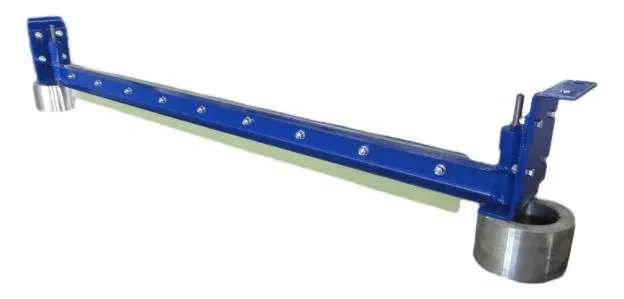 Afrikaans
Afrikaans  Albanian
Albanian  Amharic
Amharic  Arabic
Arabic  Armenian
Armenian  Azerbaijani
Azerbaijani  Basque
Basque  Belarusian
Belarusian  Bengali
Bengali  Bosnian
Bosnian  Bulgarian
Bulgarian  Catalan
Catalan  Cebuano
Cebuano  Corsican
Corsican  Croatian
Croatian  Czech
Czech  Danish
Danish  Dutch
Dutch  English
English  Esperanto
Esperanto  Estonian
Estonian  Finnish
Finnish  French
French  Frisian
Frisian  Galician
Galician  Georgian
Georgian  German
German  Greek
Greek  Gujarati
Gujarati  Haitian Creole
Haitian Creole  hausa
hausa  hawaiian
hawaiian  Hebrew
Hebrew  Hindi
Hindi  Miao
Miao  Hungarian
Hungarian  Icelandic
Icelandic  igbo
igbo  Indonesian
Indonesian  irish
irish  Italian
Italian  Japanese
Japanese  Javanese
Javanese  Kannada
Kannada  kazakh
kazakh  Khmer
Khmer  Rwandese
Rwandese  Korean
Korean  Kurdish
Kurdish  Kyrgyz
Kyrgyz  Lao
Lao  Latin
Latin  Latvian
Latvian  Lithuanian
Lithuanian  Luxembourgish
Luxembourgish  Macedonian
Macedonian  Malgashi
Malgashi  Malay
Malay  Malayalam
Malayalam  Maltese
Maltese  Maori
Maori  Marathi
Marathi  Mongolian
Mongolian  Myanmar
Myanmar  Nepali
Nepali  Norwegian
Norwegian  Norwegian
Norwegian  Occitan
Occitan  Pashto
Pashto  Persian
Persian  Polish
Polish  Portuguese
Portuguese  Punjabi
Punjabi  Romanian
Romanian  Russian
Russian  Samoan
Samoan  Scottish Gaelic
Scottish Gaelic  Serbian
Serbian  Sesotho
Sesotho  Shona
Shona  Sindhi
Sindhi  Sinhala
Sinhala  Slovak
Slovak  Slovenian
Slovenian  Somali
Somali  Spanish
Spanish  Sundanese
Sundanese  Swahili
Swahili  Swedish
Swedish  Tagalog
Tagalog  Tajik
Tajik  Tamil
Tamil  Tatar
Tatar  Telugu
Telugu  Thai
Thai  Turkish
Turkish  Turkmen
Turkmen  Ukrainian
Ukrainian  Urdu
Urdu  Uighur
Uighur  Uzbek
Uzbek  Vietnamese
Vietnamese  Welsh
Welsh  Bantu
Bantu  Yiddish
Yiddish  Yoruba
Yoruba  Zulu
Zulu Adjusting Conveyor Belt Scrapers for Optimal Performance and Maintenance Strategies
Conveyor Belt Scraper Adjustment Ensuring Optimal Performance and Longevity
Conveyor belt systems are essential in various industries, from mining to manufacturing, as they facilitate the seamless movement of material. However, to maintain their efficiency and extend their lifespan, routine maintenance and adjustments are critical. One crucial aspect of this maintenance process involves the proper adjustment of conveyor belt scrapers.
Understanding Conveyor Belt Scrapers
Conveyor belt scrapers play a vital role in ensuring the smooth operation of belt systems by preventing material build-up on the belt surface. They are designed to remove any residual material that adheres to the belt after it has discharged its load. This removal process not only helps maintain a clean work environment but also minimizes the risk of material transfer issues and equipment malfunctions.
The scrapers are typically made of materials like rubber, metal, or polyurethane and are installed at strategic locations along the conveyor system to achieve maximum efficiency. Proper adjustment of these scrapers is essential for effective cleaning and to minimize wear on both the scraper and the belt.
Why Proper Adjustment is Necessary
Improperly adjusted scrapers can lead to several issues. If the scraper is too tight against the belt, it can cause excessive wear on both components, leading to premature failure. Conversely, if the scraper is too loose, it will not effectively remove debris, resulting in material build-up, which can affect belt alignment and cause slippage, reducing the system's efficiency.
Additionally, improper scraper adjustment can create a host of safety concerns. Material build-up can lead to materials spilling over the edges of the belt, creating a hazardous work environment and increasing the risk of accidents. Therefore, regular inspection and adjustment are vital parts of conveyor belt maintenance.
conveyor belt scraper adjustment

Adjusting Conveyor Belt Scrapers
The adjustment process begins with a thorough inspection of the conveyor system. Operators should closely examine the scrapers to identify wear patterns, material accumulation, and any signs of misalignment. After assessing the condition of the scrapers, the following steps can guide the adjustment process
1. Determine the Optimal Pressure The scraper should be positioned to apply just enough pressure against the belt to remove residual material without causing undue wear. This often requires consulting manufacturer specifications or industry best practices to determine the appropriate distance from the belt.
2. Use Appropriate Tools To adjust the scraper, use the necessary tools such as wrenches or screwdrivers, depending on the type of fastening mechanism. Ensure that adjustments are made evenly on both sides of the scraper for balanced pressure.
3. Monitor During Operation After making adjustments, it is essential to monitor the scraper's performance during operation. Observing the material removal effectiveness and any changes in belt behavior can provide valuable insights into whether further adjustments are necessary.
4. Regular Maintenance Schedule Establishing a routine maintenance schedule can help ensure scrapers are consistently inspected and adjusted as needed. This proactive approach can help prevent issues before they arise, saving time and costs associated with intensive repairs.
Conclusion
In conclusion, conveyor belt scraper adjustment is a critical component of effective conveyor system maintenance. By ensuring that scrapers are properly adjusted, industries can enhance operational efficiency, reduce maintenance costs, and promote a safer working environment. Regular inspections and adjustments not only prolong the life of the conveyor system but also ensure that it operates at peak performance, delivering consistent results in transporting materials. Understanding this key aspect of conveyor maintenance can empower operators and maintenance personnel to keep their systems running smoothly.
-
Revolutionizing Conveyor Reliability with Advanced Rubber Lagging PulleysNewsJul.22,2025
-
Powering Precision and Durability with Expert Manufacturers of Conveyor ComponentsNewsJul.22,2025
-
Optimizing Conveyor Systems with Advanced Conveyor AccessoriesNewsJul.22,2025
-
Maximize Conveyor Efficiency with Quality Conveyor Idler PulleysNewsJul.22,2025
-
Future-Proof Your Conveyor System with High-Performance Polyurethane RollerNewsJul.22,2025
-
Driving Efficiency Forward with Quality Idlers and RollersNewsJul.22,2025





























